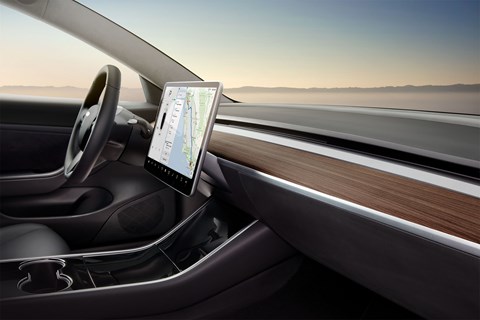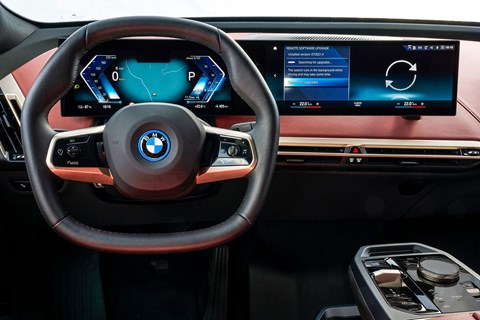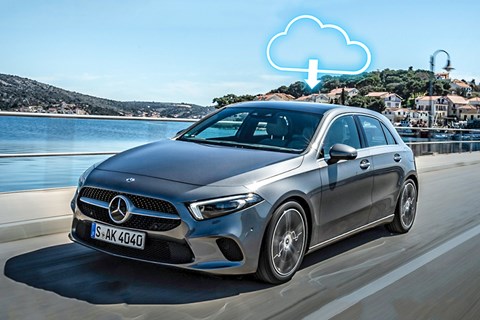► CAR explains over-the-air updates
► How they work in modern cars
► And how you might have to pay for some…
You want the good news or the bad news about over-the-air updates? The reality is, it’s exactly the same news, but viewed from contrasting old-school petrolhead or digital-first Silicon Valley perspectives. As pioneered by Tesla, and increasingly being adopted by other car manufacturers, new software is beamed to your car while it’s parked, ready to offer an enhanced experience the next morning. It’s often small tweaks to sat-nav mapping, or the infotainment, or the virtual owner’s manual, but might also be something more significant like a revision to an electric car’s energy management, giving more power, more range or quicker charging.
Polestar, for instance, recently provided a new feature called Connected Safety, which warns the driver of potential hazards, using information gained from other Polestars and Volvos – which wouldn’t have been possible a couple of years ago, but now there are enough connected cars for it to make sense.
Car spec is no longer set in stone
You didn’t have a dog when you bought your Tesla, but you’ve got one now. Scroll through your menus and you’ll find that Dog Mode is there, and was recently improved to send you push notifications when your parked car’s battery drops below 20 per cent, so you can be sure the dog is still being properly ventilated.

Or you acquire a pre-owned car spec’d by someone with different tastes. They didn’t want auto high-beam assist, but you do – even if it means paying extra. As Volvo puts it, a new car is no longer at its finest when it leaves the factory, but keeps improving over time as more OTA updates are launched.
You’ll rarely need a dealer visit
OTA updates fit into a pattern of car makers and owners having a more direct relationship, at the expense of the owner-dealer bond. It’s now easier than ever to buy – new or approved-used – straight from the manufacturer, and the car is delivered to your home. Service intervals on combustion cars have got further apart, and EVs have fewer moving parts in need of maintenance. Widespread adoption of measures such as lane-keep assist and adaptive cruise control means fewer crash repairs are needed, too. And where previously a recall might have been needed to sort a software glitch, now it’s dealt with while you’re snoozing indoors.
But some updates cost money..
Not the majority of over-the-air updates, which are regarded as part of the service. But other – optional – upgrades aren’t free. Decide you want the more extreme form of rear-wheel steering in your Mercedes EQS, or want to activate the heated seats in certain BMWs? That’ll cost you, even though the hardware was there all along. The CAR team has had personal experience of this; pressing a physical adaptive high-beam switch on the stalk of a 5-series prompted a message inviting us to the BMW Store to pay for the privilege.

And the same technology can be used to switch on or switch off your access to Apple CarPlay, for instance, at the start or end of a subscription to something like real-time traffic alerts.
Manufacturers aren’t shy about their money-making intentions with OTA updates; Markus Schäfer, head of research for Mercedes cars, tells CAR: ‘We’re aiming for an additional €1bn by 2025 to be added from packages and services that we’re selling over the air. Of course, we want to provide features and new experiences to our customers, but also ultimately to do additional business in the future after we’ve sold the vehicle. That’s going to be more and more important.’
Living on Cloud v9.0: some handy tips

How do I update my car?
Every car with an infotainment system can be subject to software updates. More basic, less connected systems require trips to the dealer for updates, but more cars now feature their own wi-fi receiver (allowing you to update via your home network, if your car’s within range of your router), or have a dedicated SIM card, able to download the update when there’s cellular signal. More sophisticated systems like BMW’s OS 7 and 8, Merc’s MBUX variations and Tesla’s system routinely check for updates of their own accord.
What usually changes?
Mostly small things; bug fixes for glitchy programs, alterations or refinements to safety systems, or simply new mapping data. Sometimes updates go awry, though; SiriusXM in the US issued an update to Uconnect systems in Jeep vehicles which resulted in an endless reboot loop, effectively disabling the system. But plenty of car makers allow the existing version to continue to run if an update should fail.
What updates can I buy?
Mercedes in the UK, at the time of writing, charges £200 for using the front-facing camera as a dashcam, and a ‘beginner driver mode’ that limits acceleration, from £19, or AMG’s Track Pace app for £219 and that more extreme rear-steer from £429 on the EQE and EQS. BMW even offers adaptive cruise for £750 or adaptive M suspension for £399 if your car has the physical tech to allow it as well as a BMW Connected subscription.
More tech news and advice from CAR magazine